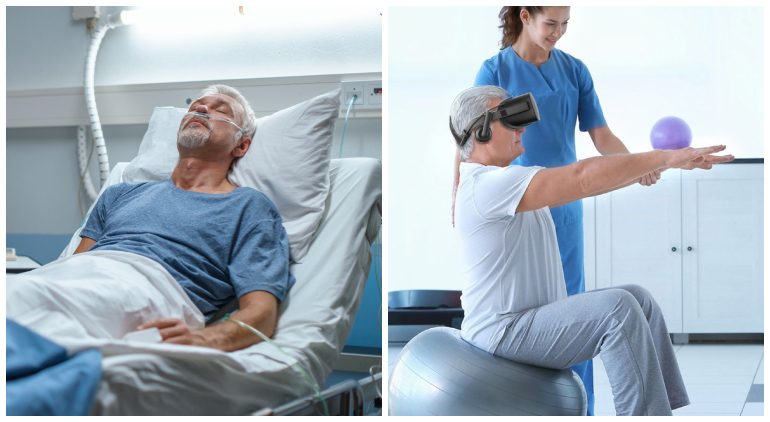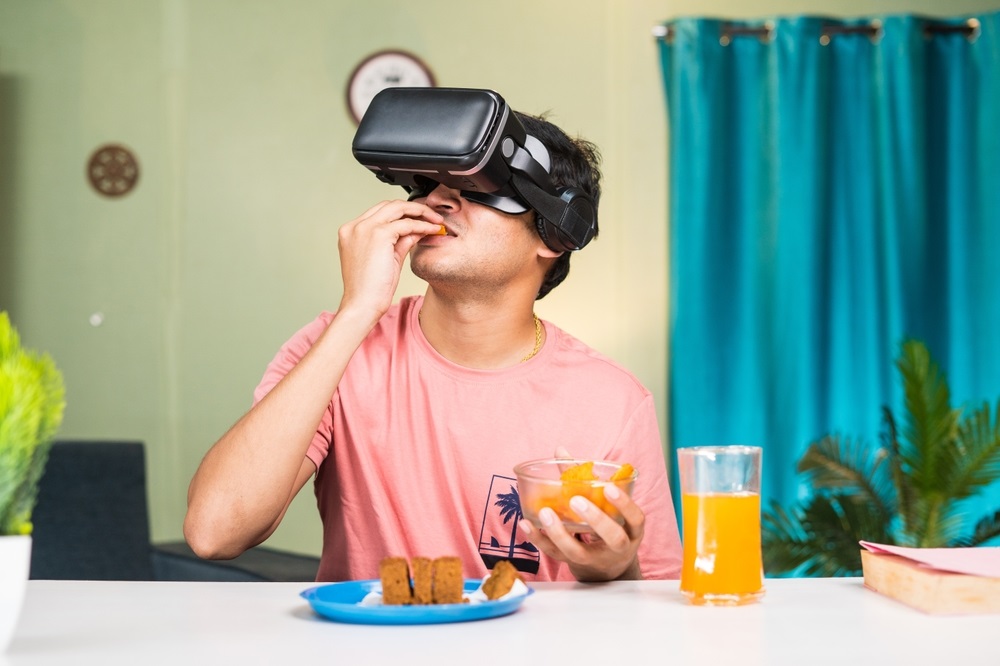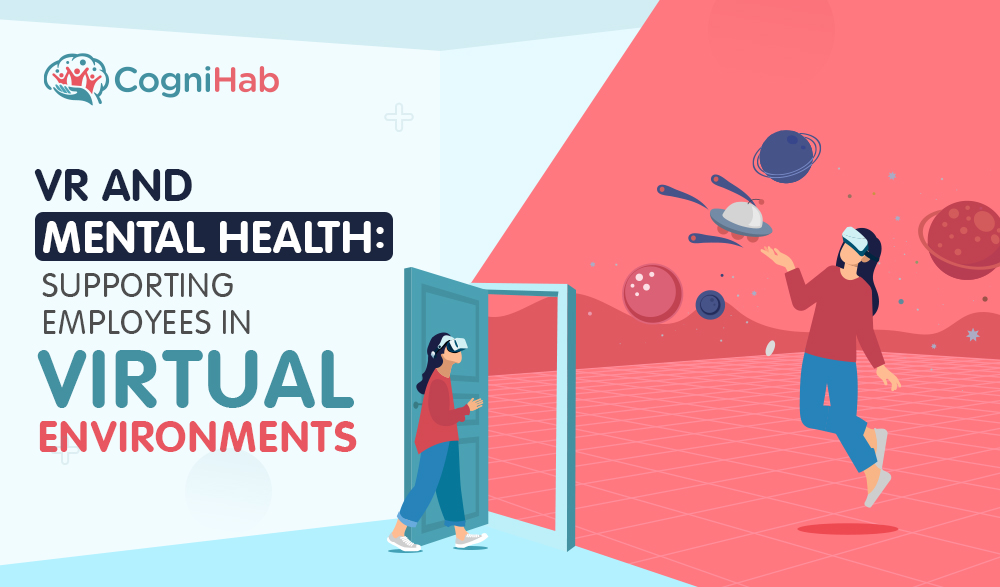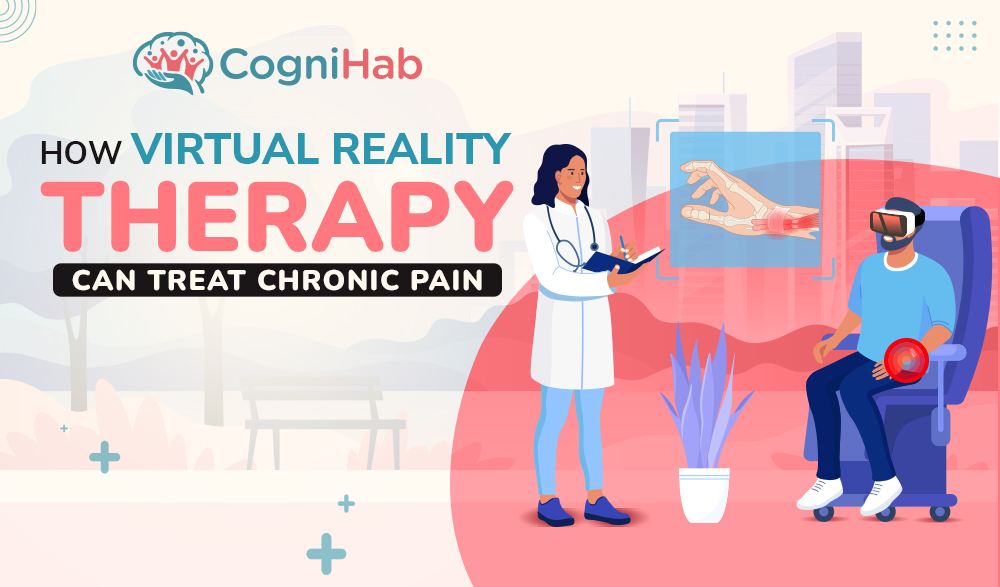Virtual Reality Rehabilitation Vs Conventional Physical Therapy for Stroke Rehabilitation
Rehabilitation therapy is an assemblage of intercession required when a person is undergoing or presumably is about to experience impediments in regular functioning due to a number of circumstances like chronic diseases or impairments, ageing, injuries, and trauma.
The purview of its necessity extends considerably from physical limitations like moving around post a stroke or trauma to mental and cognitive difficulties like seeing, hearing, communicating, etc.
Rehabilitation therapy empowers individuals to maintain or return to everyday life activities, lately, with an 18% increase in the pervasiveness of non-communicable diseases, a surge in the need for such therapy is observed all around the world.
What is Virtual Rehabilitation?
Emerging as the need of the hour is the Virtual Reality Rehabilitation, virtual mode of rehabilitation has been proven to be effective in recent times, it is now being used for psychological or occupational therapy.
Patients who are availing virtual reality therapy are asked to manoeuvre through a simulated digital interface and systematically complete assigned tasks that are customised with precision to treat a certain ailment.
The technological configuration is comprehensive and can range from a standard desktop to a more contemporary virtual reality headset. This mode of therapy has proven to be especially effective in treating PTSD and is now being considered as a substitute for exposure therapy as well. Virtual reality for stroke rehabilitation initiatives has also been fruitful as it has been used to help stroke patients regain muscle control.
Virtual Reality for Stroke Rehabilitation
Stroke is the rudimentary cause of physical as well as psychological impairments all around the world. Virtual rehabilitation therapy is a convincing way of reducing such disabilities. Through extensive procedural digital methodologies, it is possible to guide patients in their rehabilitation process and enhance receptivity, while engaging in repetitive exercises.
The process involves physical therapy, occupational therapy, and speech therapy. The alignment of a patient's skills are to be re-evaluated post damage, as the intensity of stroke complications and the ability to recover may vary for each patient. After examining the extent of damage, physical and mental activities are administered by therapists, which include consolidation of motor skills, mobility exercises, and a series of motion therapy.
Virtual reality systems are used for neural rehabilitation. It replicates a virtual environment that makes a patient perceive. This is realised by equipment that is either worn or placed in front of the patient, such as giant screen projection, stereoscopic glasses, etc. The set up emphasises on improving motor skills related to ADL. Significant improvement in cognitive learning skills is also noticed.
The virtual reality system allows for task-oriented practice of repetitive, exhaustive yet changeable difficulties to encourage a suitable practice schedule resulting in the eventual development of a patient.
Virtual Reality System for Physical Therapy
Virtual reality utilizes non-invasive distracting devices and is more constructive than the no-technology standard of care for improving clinical results in patients in need of acute rehabilitation due to atrophy and surgery. The preference of virtual reality exposure therapy over in-vivo exposure therapy is therefore convenient. There are a number of reasons, viz.
● Virtual reality systems for physical therapy neutralizes the proximity factor between the patient and the therapist. Owing to unavoidable circumstances like non-reliability of transportation mode or inability to commute due to a clinical condition like paralysis or extreme obesity, in-vivo therapy is not always the practical alternative.
However, fight with occupation stress with virtual reality can be done from any random location in the world if given the necessary tools. Thus, discrimination against those with mobility issues can be done away with.
● There is another significant advantage over a typical physical therapy method is patient determination. More often than not, patients tend to lose interest when conferred with tedious exercises during a prolonged period, resulting in a decrease in compliance.
Virtual reality rehabilitation encourages and motivates patients to challenge their limitations in an effective manner, this mode of therapy infuses fun in the therapy process as it can be more interactive and competitive with things like high scores, in-game rewards.
Furthermore, it allows therapists to analyse and record a patient's progression systematically. The data that is acquired during the therapy can be categorically charted and shown to the patient for increased motivation.
Cognihab is utilising virtual reality technology to provide next-generation healthcare solutions and changing the healthcare experience for both patients and medical professionals. The potential of virtual reality in the healthcare sector is immense.
Organizations such as Cognihab are constantly striving to provide more innovative and affordable technology to help patients rise above their physical or mental limitations and difficulties through the use of virtual reality technology. With each passing day, this technology and advanced procedures are getting widely adopted for more effective yet interactive experiences.
Hence, Congihab is truly redefining the healthcare technology trend, created by the guidance of senior doctors, which strives to rejuvenate, rewire, and rehabilitate your mind, body, and soul for a speedy recovery.
Experience the transformations brought about by virtual reality in your way to become healthier and free of ailments.







